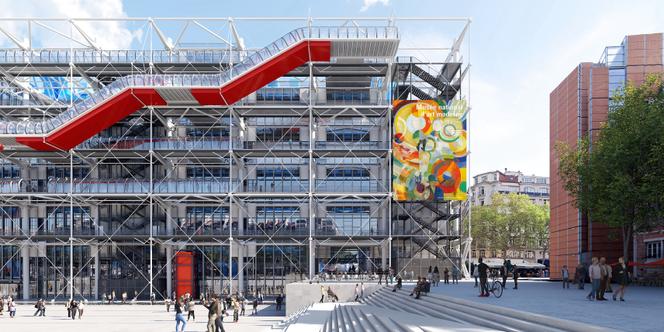

In Paris, Centre Pompidou is about to get renovated: 'We sought to let in as much light as possible'

Winners of the competition to transform the Centre Pompidou's cultural master plan, Nicolas Moreau and Hiroko Kusunoki, of the Moreau Kusunoki agency, were unanimously selected by a jury that included Renzo Piano, the co-designer (with Richard Rogers, who died in 2021) of the revolutionary museum. Trained respectively with Kengo Kuma and Shigeru Ban, and renowned for having won the competition for Helsinki's Guggenheim Museum in 2015 – which in the end did not see the light of day – Moreau and Kusunoki have since created a building for the new Sciences Po Paris campus, as well as, among others, the forecourt of the Paris judicial court by Piano.
For Beaubourg [the other name for the Musée national d'Art moderne at the Centre Pompidou], they teamed up with Mexican Frida Escobedo. The competition was conceived by President of the Centre Pompidou Laurent Le Bon who wished to use the opportunity of the building's renovation (which will result in its closure from 2025 to 2030) to reconfigure the spaces. The focus was on the first three upper floors, the first floor, and the basement. The €186 million cultural side of the project will be financed by the Centre Pompidou, which launched a patronage campaign.
Hiroko Kusunoki: The program was very prescriptive. It was based on extensive feasibility studies, made necessary by the nature of the museum. Beaubourg is a city in a city, an extremely complex political and organizational machine. It would have been perceived as presumptuous to question the program. We took a few minor liberties, but overall, we kept to it. Our approach was also very much heritage-minded. We're very attached to this museum, which we grew up with, and which is like a monument, a rarity in the history of architecture. We went about it with caution, removing rather than adding, establishing a color code based on shades of gray so as not to compete with the red, blue, green, and yellow of the original project.

At the same time, we wanted to respect the social ideal that led Rogers and Piano at the time of the competition, which disrupted the idea of what a place of culture could be, and which endures despite changes in society. At Beaubourg, you can see people sleeping on sofas. In the library, there are homeless people and undocumented immigrants. It's a shelter
Nicolas Moreau: To go back to the original idea of a completely porous, empty building. A lot has happened since the museum opened in 1977, not least Vigipirate [France's anti-terrorist national alert system], which destroyed this principle. The renovation carried out between 1997 and 2000 also resulted in an accumulation of closed mezzanines that cut off the relationship with the city. An operation that Piano himself recently described in an interview as a "square meter disease."
You have 49.77% of this article left to read. The rest is for subscribers only.
